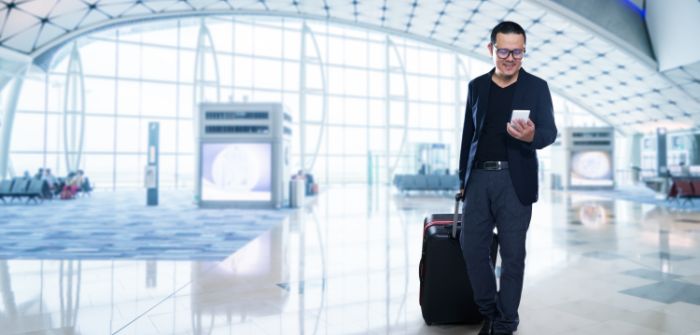The next two summers will be among the busiest ever for Japan’s airports. In September this year, the country will host the Rugby World Cup. Less than a year later, its capital city, Tokyo, will host the 2020 Summer Olympic and Paralympic Games. Iyad Hindiyeh, global head of strategy, airport IT, Amadeus, describes how operating a smart airport can improve the passenger experience, even in the face of unusually high visitor numbers.
Inbound air passenger numbers are expected to grow by 12% through 2019 to around 35.5 million. In 2020, they are expected to reach a record 40 million. This is in a country already the world’s 5th biggest for aviation.
Japanese airports, of course, are not alone in accommodating a growing passenger intake. Air travel is becoming increasingly affordable and popular. On current trends, global passenger numbers are expected to double by 2036, with Asia driving the majority of this growth.
A challenge and an opportunity
Rising passenger numbers present both challenges and opportunities for airports. They are often constrained by physical space, as numbers fluctuate day-to-day. At the same time, there are significant opportunities to provide travelers with higher-quality services at scale. The very best airlines and airports are embarking on digital strategies to help them achieve exactly this.
Japan Airlines (JAL) is one such airline. This year, it launched its ‘smart airport’ vision, complementing cutting-edge technology with intelligent airport design to provide its passengers with the best possible experience. It will enable the airline to carry its customers to 500 global destinations by April 2021. But what exactly does the ‘smart airport’ look like?
From the passenger perspective
Imagine you’re a passenger, traveling from the UK to next year’s Olympic Games in Tokyo. After taking in the sights and sounds of the capital, you want to make the most of your time in Japan and book a flight to Osaka. However, with so many people visiting the city, the volume of passengers at Tokyo Haneda Airport (which serves domestic flights) is higher than usual.
 JAL’s smart airport vision will ensure its check-in desks at Tokyo Haneda Airport have the flexibility to manage these high volumes. By upgrading its departure control system (DCS), JAL will be able to provide its passengers with improved self-service capabilities. Automated bag-drop units enable you to check in bags at your leisure. In addition, extra check-in desks can be allocated to busy areas of the airport, providing extra capacity where needed.
JAL’s smart airport vision will ensure its check-in desks at Tokyo Haneda Airport have the flexibility to manage these high volumes. By upgrading its departure control system (DCS), JAL will be able to provide its passengers with improved self-service capabilities. Automated bag-drop units enable you to check in bags at your leisure. In addition, extra check-in desks can be allocated to busy areas of the airport, providing extra capacity where needed.
At the check-in desk itself, JAL’s ground handlers will be equipped with a simplified interface, providing you with the latest information and offers on flight preferences, such as catering options and seat allocation, ensuring your experience with the airline is a personal one. With queues cut to a minimum and more self-service options, your journey through the airport will be seamless, giving you extra time to relax in the lounge.
Track and trace
With JAL’s ‘smart airport’ vision, however, it won’t just be you making a seamless transition through the check-in process. Your bags will make an almost identical journey, passing through security checks before eventually finding their way onto the airplane.
JAL’s investment in an upgraded baggage reconciliation system (BRS) will ensure there is a track-and-trace system for your bags, scanning them at key stages in their journey through the airport. Airports that have already invested in baggage reconciliation technologies have significantly reduced incidents of mishandled baggage. Another thing less to worry about.
Working with the airport
JAL’s ‘smart airport’ vision isn’t just of benefit to its passengers. The airline works closely with hundreds of airports worldwide. Airlines investing in cutting-edge technologies have delivered significant cost and efficiency savings to airports. This makes an airline like JAL an ideal partner.
In order to accommodate its ambitions for growth, Japan Airlines set out its vision for a smart airport, one complementing cutting-edge technology with intelligent design. To turn its vision into reality, the airport invested in an upgraded departure control system and a new baggage reconciliation system. In doing so, the airport will ensure it is equipped to handle rising passenger numbers, while improving its passenger experience. This ensures it is an ideal partner for airports, and well-placed for all the challenges and opportunities ahead.


